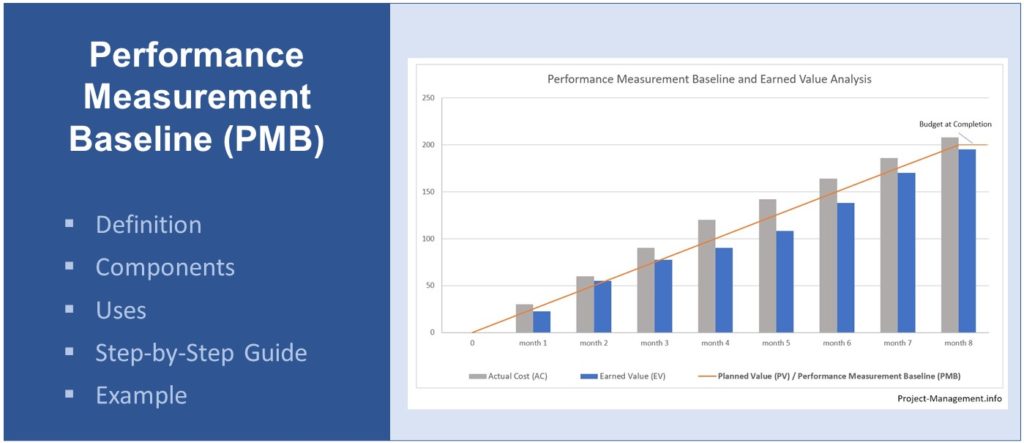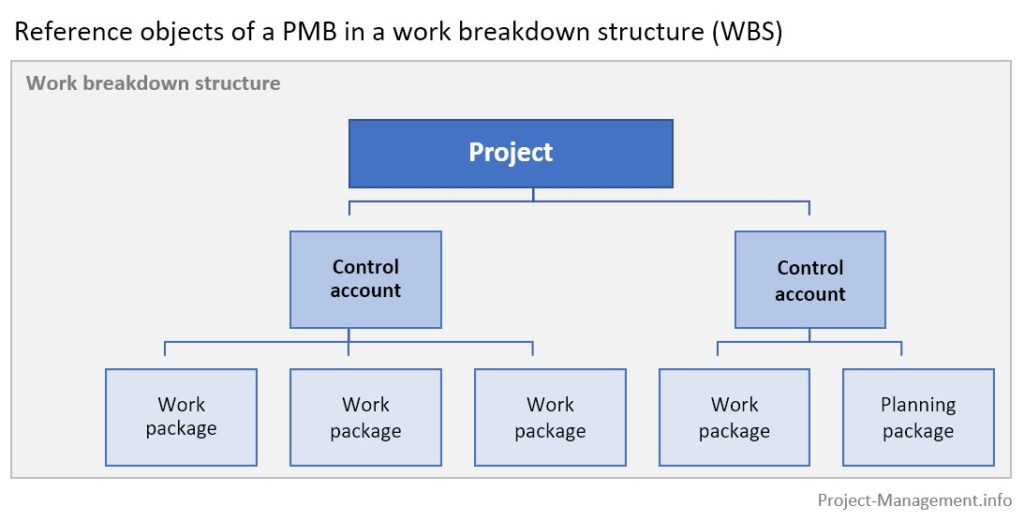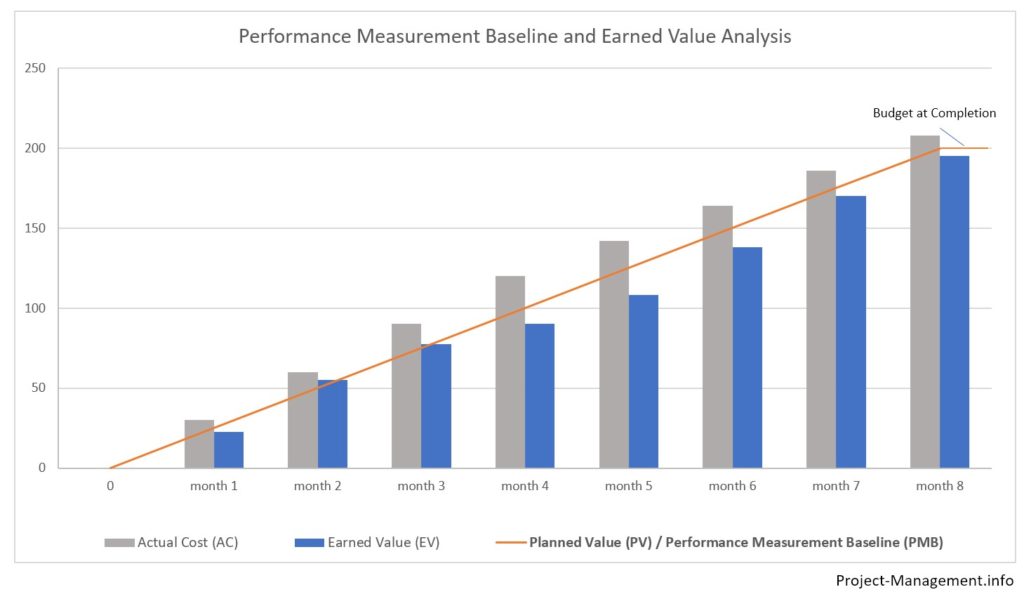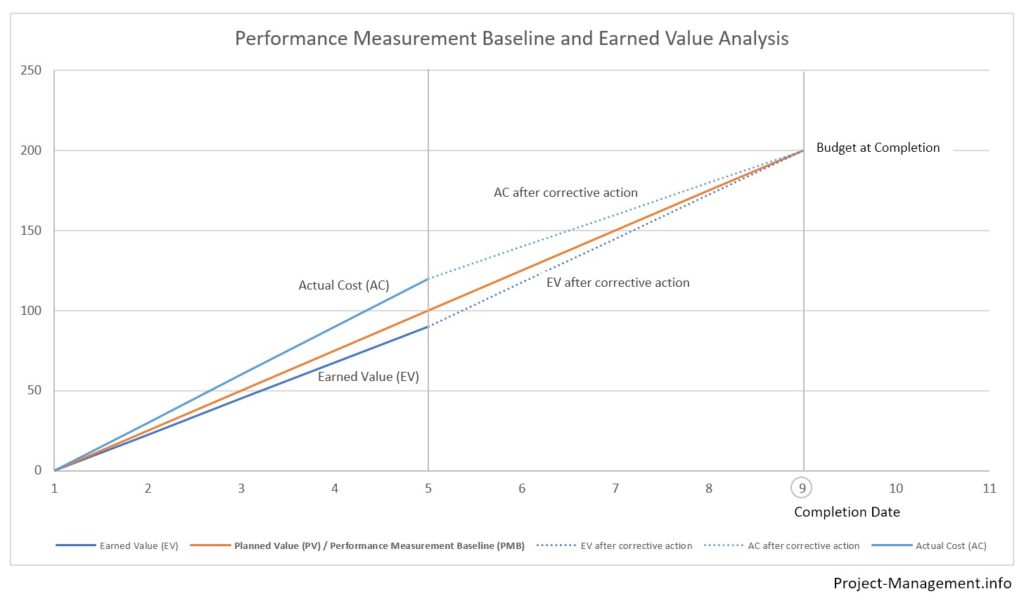One of the key tasks in project management is the tracking of the progress and performance of a project. As a prerequisite, the criteria for measuring performance need to be clearly defined and agreed by the project’s stakeholders. This is done by establishing a performance measurement baseline (PMB) thay serves as the yardstick for the performance of a project and its components.
In this article, we will be discussing the definition of the PMB, its components, uses and how it is created.
What Is a Performance Measurement Baseline?
The performance measurement baseline (PMB) is a component of the project plan. It sets out the scope, budget and schedule of a project or portions of a project. The progress of the work is measured against this baseline which helps the project manager and the stakeholders determine where the project stands with respect to schedule, budget, and scope.
A performance measurement baseline is typically established for an entire project. In addition, it is often broken up to a more granular level. In a work breakdown structure (WBS), it can refer to a control account that contains one or several work packages or planning packages (source).
Which Baselines Are Part of the Performance Measurement Baseline?
The performance baseline consists of the 3 baselines that are also components of a project plan:
- project scope baseline,
- project schedule baseline, and
- project cost baseline.
The scope baseline defines the scope of a project in terms of combining the scope statement and the defined work breakdown structure of the project (find an example of a scope baseline here).
The schedule baseline defines the schedule of project activities (based e.g. on estimated activity durations and schedule network diagrams).
The cost baseline is the budget allocated to project activities (based on cost estimates). Both the schedule as well as the cost baseline include contingency reserves but do not contain the management reserves.
To be used for performance measurement purposes, these baselines need to be approved in accordance with the project governance.
The term ‘performance measurement baseline’ can either refer to the group of these three baselines or to a dedicated PMB document that consolidates the content of these baselines. It is therefore arguable whether the PMB is a baseline itself, or just a consolidation of baselines.
The PMI framework (PMBOK®, 6th ed., ch. 4.2.3.1), for instance, does not list the PMB under ‘baselines’ but as ‘additional document’ in the lists of components of a project plan.
Regardless of the format, a PMB should set out through which indicators performance is being measured. This provides guidance for the project controlling and transparency for stakeholders as well as project resources.
Can a Performance Measurement Baseline Be Changed?
The need for changes occurs if the planned and approved schedule, budget, or scope of a project become obsolete and subject to a replanning. Changes of the plan normally also affect the performance measurement baseline.
However, whether the perceived need for a change leads to an actual change is subject to the change control processes of a project. Only if changes are approved by the respective committee that is responsible (e.g. the steering committee or a change control board), they can be incorporated into the respective baseline(s).
With the approved changes incorporated, the revised performance measurement baseline is being used going forward. Previous versions of the PMB become obsolete.
What Is a Performance Measurement Baseline Used For?
PMB is generally used in controlling the scope, schedule and cost throughout the project. The actual progress, measured through predefined indicators, is compared against the baseline.
The indicators used for this performance measurement are defined in the scope, schedule, and cost management plans. They can include milestones, percentage of completed work or budget consumed, for instance. Those plans also set out how the delivered work and consumed resources are tracked and documented.
Performance measurement and management can refer to
- Cumulative or point-in-time performance,
- past or current performance, or
- projected future performance, e. g. by using trend analysis techniques.
The results of performance measurement inform the project manager as well as the stakeholders about the progress of a project as a whole and/or its components.
Analyzing the performance of a project helps identify issues and obstacles in the project execution/delivery. Persistent underperformance may also indicate that management action is required to correct or prevent deviations from the PMB.
A common method of project performance measurement is the earned value analysis.
Using PMB in connection with Earned Value Analysis and Management
If a project decides to use earned value analysis for its performance measurement, the planned value (PV) indicator is an important or even the only indicator of the performance measurement baseline.
The PV and the budget at completion (BAC) are the baseline against which the observed values, i. e. actual cost (AC) and earned value (EV), are compared.
If you are unfamiliar with these terms, take a minute and read this introduction to earned value analysis and management (EVA/EVM) which also contains the formulas and a few examples.
In projects where EVA indicators are the only measures of project performance, the performance measurement baseline can be identical to or even replaced with the cost baseline.
This is because the cost baseline already reflects the schedule baseline which itself is typically built on the scope baseline. Hence the EVA indicators allow for measuring all three project baselines and the PMB would be represented by the indicator planned value (throughout the project) and budget at completion.
Earned value analysis requires quantifying the earned and planned values of a project. This is often done by using the monetary value of resources for a deliverable, compared to the allocated monetary budget. It is therefore not suitable for all types of projects and organizations: companies with a market-/revenue-focused value definition or non-profit organizations with non-monetary resource inputs and qualitative measurement of values (source) may struggle with the application of earned value analysis and prefer developing a PMB with other indicators.
How to Create a Performance Measurement Baseline (in 5 Steps)
The PMB is typically created during the planning phase of a project when the project management office develops the project management plan.
The performance measurement baseline consists of the scope, schedule, and cost baseline. Creating the PMB therefore translates to developing these three project baselines and using them as the performance measurement baseline.
Step 1) Develop Scope Baseline
The first step is to determine the goal and the deliverables of a project. For the creation of the scope baseline, you will need to develop the following components:
- scope statement,
- the work breakdown structure (WBS),
- the WBS dictionary.
When these documents have been approved by the relevant committee(s) and/or stakeholders, they comprise the scope baseline.
Step 2) Develop Schedule Baseline
Based on the scope baseline, you will need to determine the sequence of activities, taking into account their (inter)dependencies. Schedule network diagrams are a common technique for this (read in this article how to use it).
Subsequently, you will need to have the durations of activities estimated (e.g. using these duration estimation techniques). Subsequently, you will need to determine the resource needs of these activities and incorporate scheduling assumptions and constraints into the planned project schedule.
The resulting schedule model is subject to approval before it becomes the schedule baseline.
Step 3) Develop Cost Baseline
Based on the resource requirements (as determined in the previous step), you will need to have the expected cost of a project and project activities estimated (see cost estimation techniques and examples).
The project budget is then subject to approval. The budget, broken down by periods (‘time-phased’) and allocated to control accounts or work packages, comprises the cost baseline of the project.
Step 4) Determine the Performance Measures/Indicators
In the previous steps, you have created the scope, schedule and cost baseline. Now you will have to extract the respective performance indicators related to those baselines. In most projects, they are included in the scope, schedule, and cost management plan, respectively.
The set of measures used for the PMB can refer to indicators of the earned value analysis (EVA, read more in this article). It can also contain other indicators that are sensible for a project to measure its work against the planned scope, schedule and budget.
Step 5) Consolidate the Three Baselines into the Performance Measurement Baseline
The PMB is not necessarily a document on its own: the term can also refer to the combination of the scope, schedule and cost baseline. A dedicated document that describes the performance measurement baseline may be sensible in some cases, e.g. to consolidate all indicators used for performance monitoring or to establish indicators beyond time and budget/value measures (e. g. qualitative aspects or a different value measure).
In any case, the project’s performance measurement needs to assess the delivered project work and consumed resources against these 3 baselines.
Step 6) Communicate, Apply and Maintain the PMB
Once the PMB is developed, it needs to be communicated to the project team and the project’s relevant stakeholders (other than those who have approved it).
Every control account manager and work package lead should be aware of the deliverable(s), milestones and allocated budget in her or his respective area.
Throughout a project, the defined indicators need to be observed and compared against the performance measurement baseline. They can be measured at different levels of granularity and on a point in time basis, cumulative over several periods or in the form of a forward-looking trend analysis).
If the project’s performance does not meet the baseline, the project manager should consider taking further action.
The PMB needs to be updated If changes of the scope, timeline or budget become necessary. Once the respective change requests have been approved, they need to be reflected in the 3 baselines and subsequently in the performance measurement baseline.
Examples of a Performance Measurement Baseline in connection with Earned Value Analysis
The following chart shows a simplified time-phased illustration of the performance measurement baseline (orange line) of a project. In this example, the project uses only earned value analysis and management to measure its performance, and the PMB is identical to the planned value (PV) and the budget at completion (BAC):
In period 5 (x-axis), the project manager compares the observed cumulative performance of the project against the performance measurement baseline, i.e. the cumulated planned value at period 5.
The actual cost exceeds the planned value and the earned value falls short of the plan. In plain words: the project has consumed more resources and delivered less value than planned. As a result, it has not met the performance measurement baseline.
In real life, a project manager would probably use trend analysis tools and techniques to assess scenarios on the project’s future performance. If you are interested, you will find some examples in this article.
In this example, performance measurement against the baseline makes underperformance visible and enables the project manager and stakeholders to take corrective action (e.g. increasing productivity) which can potentially bring the project back on track. For the project completion in period 9, this means that both the actual cost as well as the earned value should meet the budget at completion. The effect of corrective action is depicted with the dotted lines between periods 5 and 9.
Conclusion
Rather than being a generic baseline itself, the performance measurement baseline refers to the combination of scope, schedule and cost baseline of a project. The PMB is used to measure a project’s performance against its initial plan. Its key purpose is to identify deviations from the plan which the management to initiate corrective or preventive action in such cases.
One of the most common methods for measuring performance is the earned value analysis. You can learn more about EVA in this article. For more details on the scope baseline, check out this article which also comes with an example.




